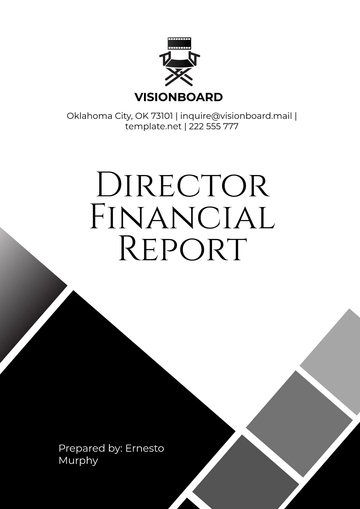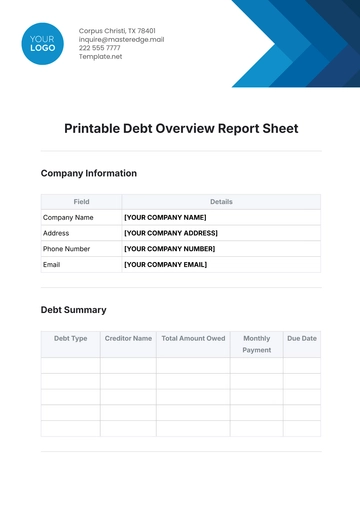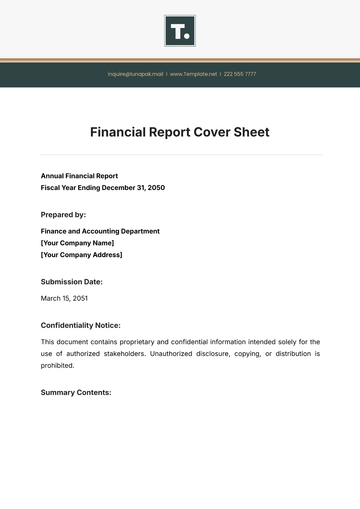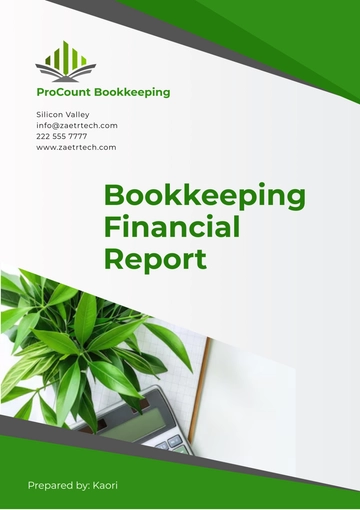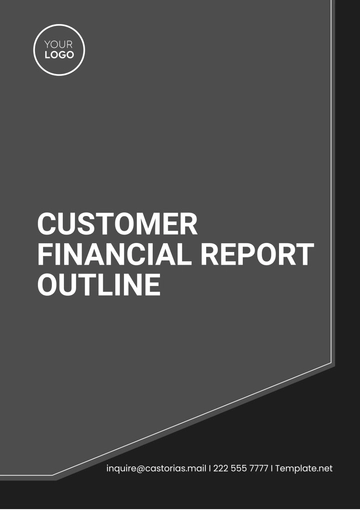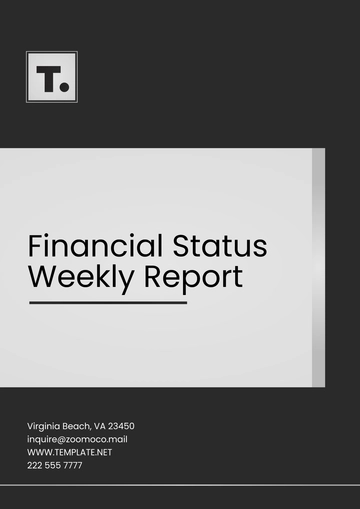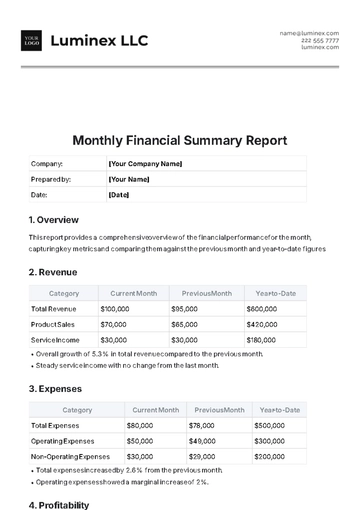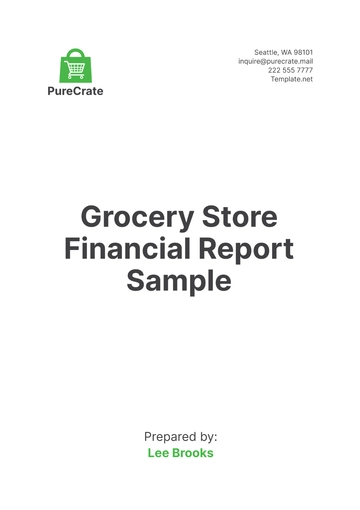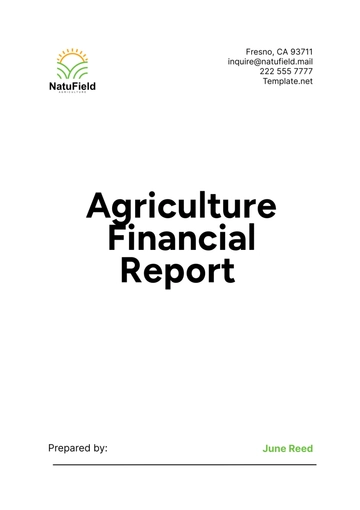Free Financial Risk Report
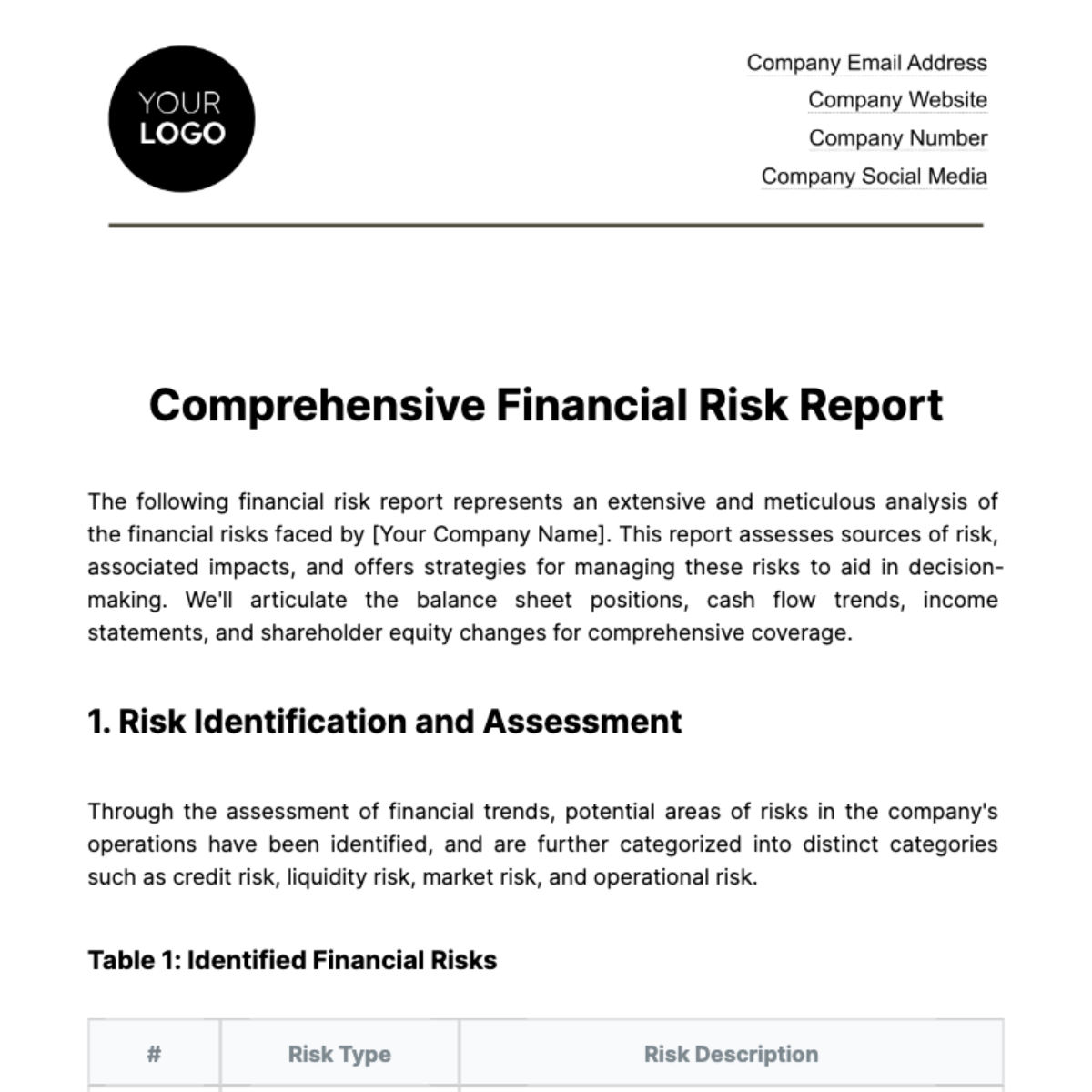
The following financial risk report represents an extensive and meticulous analysis of the financial risks faced by [Your Company Name]. This report assesses sources of risk, associated impacts, and offers strategies for managing these risks to aid in decision-making. We'll articulate the balance sheet positions, cash flow trends, income statements, and shareholder equity changes for comprehensive coverage.
1. Risk Identification and Assessment
Through the assessment of financial trends, potential areas of risks in the company's operations have been identified, and are further categorized into distinct categories such as credit risk, liquidity risk, market risk, and operational risk.
Table 1: Identified Financial Risks
# | Risk Type | Risk Description |
|---|---|---|
1 | Credit Risk | Potential default of customers not repaying their obligations |
2 | Liquidity Risk | Concerns on the company's ability to meet short-term financial needs |
3 | Market Risk | Vulnerability to fluctuations in currency exchange rates and interest rates |
4 | Operational Risk | Potential losses from inadequate or failed internal processes, systems, or human performance |
2. Financial Statement Analysis
The financial statements of [Your Company Name] have been analysed to identify financial risks and inform mitigation strategies. Our analysis covers the income statement, balance sheet, and cash flow statement.
2.1 Income Statement
Total revenues increased by [00]% from [Year] to [Year], providing [Your Company Name] with an increased cash flow. However, there is a noted increase in operating expenses too, standing at [00]%, which can hamper profitability and expansion plans.
2.2 Balance Sheet
As of [Year], [Your Company Name] has a robust asset base but higher liabilities, posing a liquidity risk. We recommend deploying strategies to reduce liabilities or increase assets.
2.3 Cash Flow Statement
The cash flows highlight a substantial reduction in cash generated from operations, leading to a higher reliance on financing activities. This risk should be addressed to ensure continuous operational efficiency.
3. Risk Mitigation Strategies
Risk mitigation has been recommended primarily focusing on the four risk areas identified. It involves reducing credit exposure, putting in place mechanisms for increased liquidity, hedging against market risks, and implementing better systems for reducing operational risks.
Table 2: Proposed Risk Mitigation Strategies
# | Risk Type | Proposed Strategy |
|---|---|---|
1 | Credit Risk | Create a comprehensive credit risk policy |
2 | Liquidity Risk | Implement stringent asset-liability management |
3 | Market Risk | Adopt financial derivatives to hedge risk |
4 | Operational Risk | Invest in technology and employee training |
4. Conclusion
Through this comprehensive report, [Your Company Name] stands equipped to understand its financial risks and the necessary measures to mitigate them. The successful implementation and review of these strategies would contribute to enhanced financial stability and sustainability.
- 100% Customizable, free editor
- Access 1 Million+ Templates, photo’s & graphics
- Download or share as a template
- Click and replace photos, graphics, text, backgrounds
- Resize, crop, AI write & more
- Access advanced editor
Template.net's editable Financial Risk Report Template is a powerful tool for businesses. Crafted by experts in financial analysis, this template simplifies risk assessment. Easily input data, analyze trends, and create detailed reports with customization features from our AI editor tool. Streamline your decision-making process with this comprehensive template, ensuring your business is well-prepared to mitigate financial risks. Elevate your financial strategy today!
You may also like
- Sales Report
- Daily Report
- Project Report
- Business Report
- Weekly Report
- Incident Report
- Annual Report
- Report Layout
- Report Design
- Progress Report
- Marketing Report
- Company Report
- Monthly Report
- Audit Report
- Status Report
- School Report
- Reports Hr
- Management Report
- Project Status Report
- Handover Report
- Health And Safety Report
- Restaurant Report
- Construction Report
- Research Report
- Evaluation Report
- Investigation Report
- Employee Report
- Advertising Report
- Weekly Status Report
- Project Management Report
- Finance Report
- Service Report
- Technical Report
- Meeting Report
- Quarterly Report
- Inspection Report
- Medical Report
- Test Report
- Summary Report
- Inventory Report
- Valuation Report
- Operations Report
- Payroll Report
- Training Report
- Job Report
- Case Report
- Performance Report
- Board Report
- Internal Audit Report
- Student Report
- Monthly Management Report
- Small Business Report
- Accident Report
- Call Center Report
- Activity Report
- IT and Software Report
- Internship Report
- Visit Report
- Product Report
- Book Report
- Property Report
- Recruitment Report
- University Report
- Event Report
- SEO Report
- Conference Report
- Narrative Report
- Nursing Home Report
- Preschool Report
- Call Report
- Customer Report
- Employee Incident Report
- Accomplishment Report
- Social Media Report
- Work From Home Report
- Security Report
- Damage Report
- Quality Report
- Internal Report
- Nurse Report
- Real Estate Report
- Hotel Report
- Equipment Report
- Credit Report
- Field Report
- Non Profit Report
- Maintenance Report
- News Report
- Survey Report
- Executive Report
- Law Firm Report
- Advertising Agency Report
- Interior Design Report
- Travel Agency Report
- Stock Report
- Salon Report
- Bug Report
- Workplace Report
- Action Report
- Investor Report
- Cleaning Services Report
- Consulting Report
- Freelancer Report
- Site Visit Report
- Trip Report
- Classroom Observation Report
- Vehicle Report
- Final Report
- Software Report



